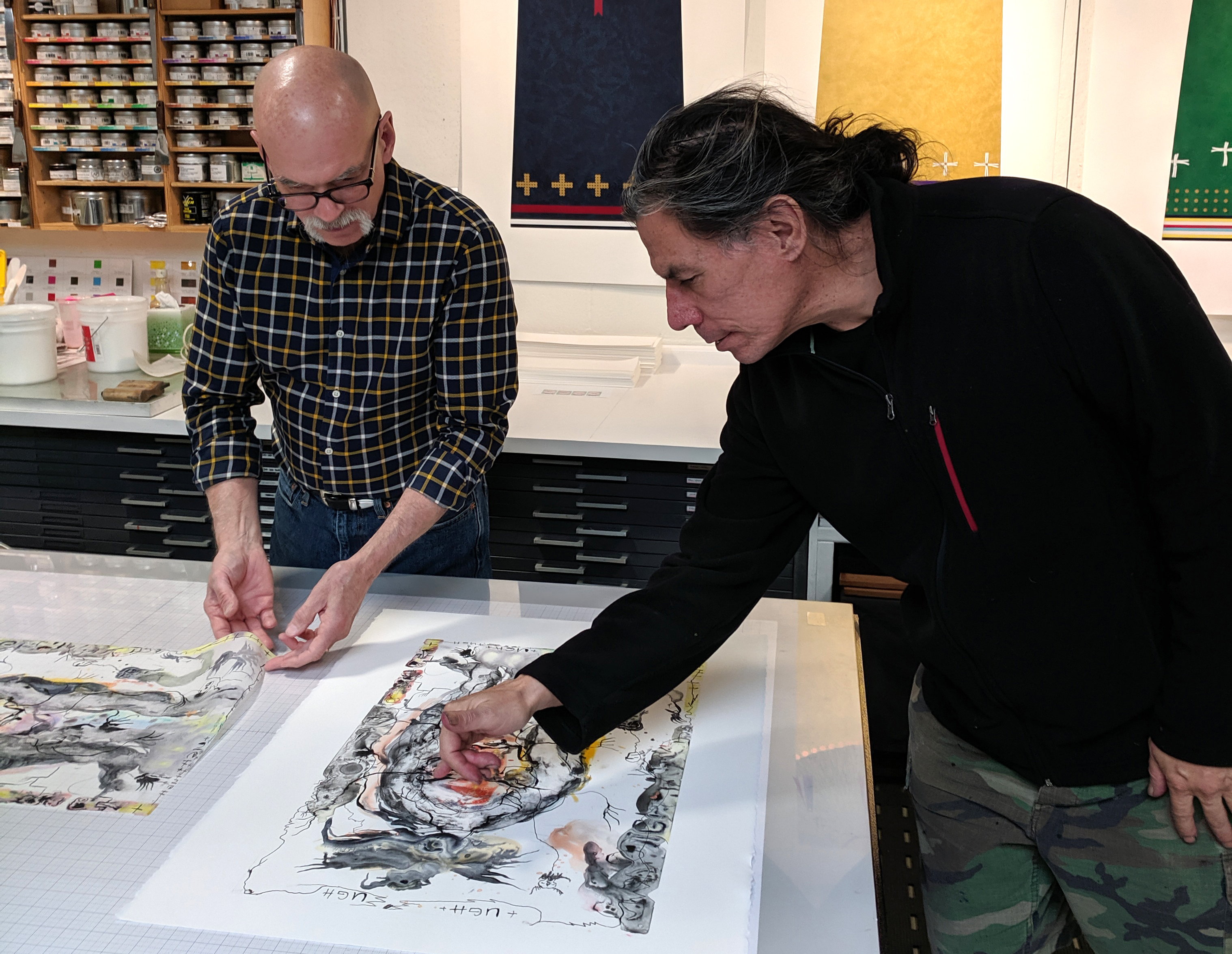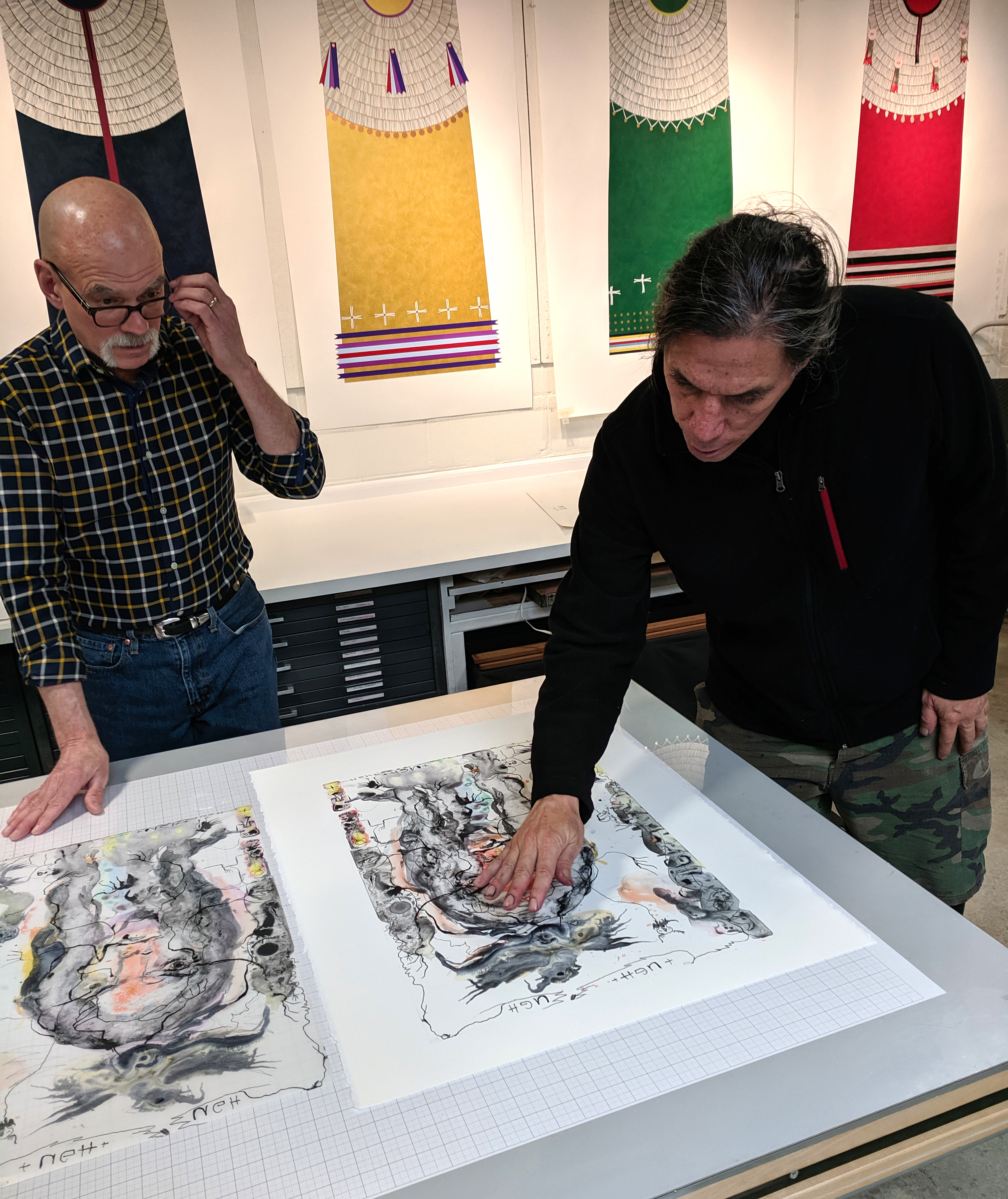Born 1956, Tucson, Arizona
Brad Kahlhamer’s early exhibition titles—“Friendly Frontier,” “Almost American,” “Let’s Walk West”—suggest exploration, in his case an exploration of identity. Kahlhamer was born to Native American parents in Tucson, Arizona, then adopted as an infant by a German American couple. He has never known the identities of his birth parents or his tribal affiliation. When Kahlhamer was fourteen, his family moved to Mayville, Wisconsin. He earned a BFA from the University of Wisconsin, Oshkosh and Fond-du-Lac, in 1982. Soon after, he began a nine-year stint as a design director at trading-card maker Topps in New York City. There he met the underground comics artist Art Spiegelman, “the important first figure to introduce me to New York culture,” Kahlhamer says.1 Street culture has influenced Kahlhamer’s painting and drawing, as have Plains Indian ledger drawings, his taxidermy collection, and his many road trips to experience Native ceremonies, artifacts, and sacred sites. His “Super Catcher” series (2014), consisting of wire, jingles, and powwow bells, is rooted in traditional dream catchers. Seeing the Hopi katsina dolls at Phoenix’s Heard Museum inspired his Bowery Nation (2012)—one hundred figures assembled from rubber inner tubes, feathers, nails, coat hanger wire, Kahlhamer’s hair, and other miscellany. Several of the artist’s 2019 Highpoint watercolor monoprints echo bulbous Hopi mudhead katsinas.
An accomplished guitarist who spent years traveling the Midwest as a road musician, Kahlhamer wove his music into his art from the start. In the early 2000s, the National Museum of the American Indian asked him to score the silent film Redskin (1929), which he performed at screenings with violinist Laura Ortman. “The sounds I play are like the forms in my work—skeletal, jangly, wirey,” he has said. “I always travel with a sketchbook so I can jam out visually in the same way I would with a guitar.”2
When not in New York, Kahlhamer lives in Mesa, Arizona. He has received grants from the Foundation for Contemporary Arts (2020), Peter S. Reed Foundation (2017), and Joan Mitchell Foundation (2006), among others, as well as a Richard Diebenkorn Teaching Fellowship (2016) and a Robert Rauschenberg Foundation residency (2015). His many exhibitions include “Brad Kahlhamer: A Nation of One” (2019–20), Minnesota Museum of American Art, St. Paul, and Plains Art Museum, Fargo, North Dakota; “Brad Kahlhamer” (2015–16), Joslyn Art Museum, Omaha, Nebraska; “Weaving Past into Present: Experiments in Contemporary Native American Printmaking” (2015), International Print Center New York; “The Plains Indians: Artists of Earth and Sky” (2014–15), Musée du quai Branly, Paris, and other venues; “One Must Know the Animals” (2012), Madison Museum of Contemporary Art, Wisconsin; “America: Now and Here” (2011–12), Kansas City (Mo.), Chicago, and other U.S. cities; and “The Old, Weird America” (2008–10), Contemporary Arts Museum Houston and other venues.
—Marla J. Kinney
Notes
Brad Kahlhamer, phone conversations with the author, March 2020. ↩︎
Priscilla Frank, “Native American Folk Art Meets Punk in One Artist’s Search for Identity,” HuffPost, September 8, 2015, https://www.huffpost.com/entry/native-american-folk-art-meets-new-york-punk-in-one-artists-search-for-identity_n_55e9d7c9e4b002d5c075ee64. ↩︎

